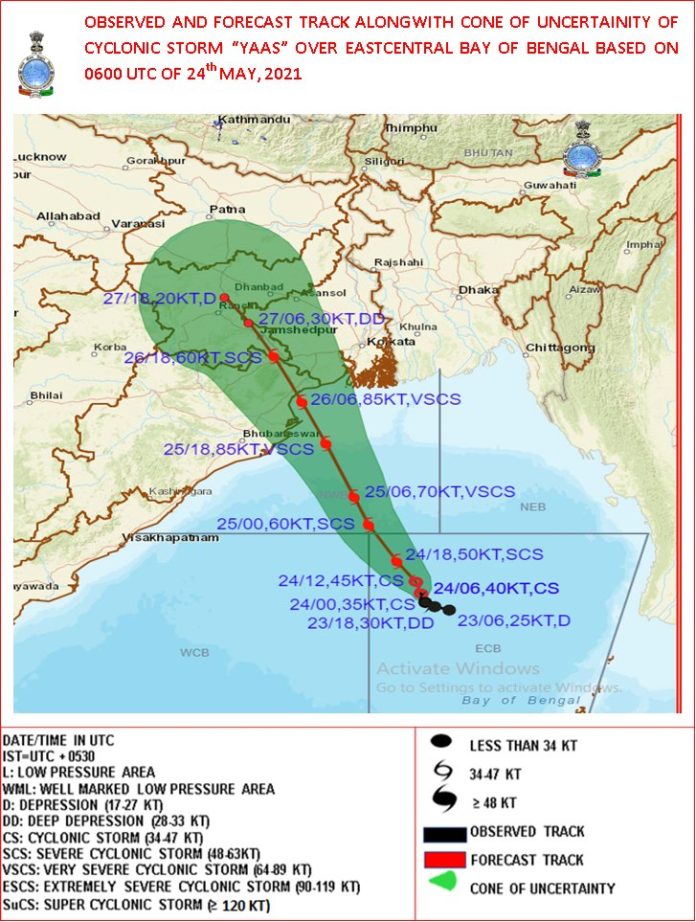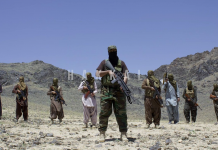New Delhi (NVI) As Odisha and West Bengal brace for the Cyclone, one may wonder why it is called ‘Yaas’. Or why the cyclone, which recently caused destruction in western states like Maharashtra, Gujarat and Goa, was called ‘Tauktae’.
These names are alien to India, then why the cyclones which hit India are called with such nomenclature?
It is because there is a proper global system in place under which different cyclones are given particular names across the world. These names are proposed by different countries and used in sequence-wise.
The World Meteorological Organisation (WMO) maintains rotating lists of names which are appropriate for each Tropical Cyclone basin.
For instance, in our region, 13 countries are tasked with naming cyclones which develop over the North Indian Ocean, including the Arabian Sea and Bay of Bengal. These are India, Bangladesh, Myanmar, Thailand, Sri Lanka, Maldives, Pakistan, Oman, Iran, Qatar, Saudi Arabia, UAE and Yemen.
The cyclones are named by the Regional Specialised Meteorological Centres (RSMCs) and Tropical Cyclone Warning Centres (TCWCs). There are six RSMCs and five TCWCs in this region, which includes the Indian Meteorological Department (IMD).
Accordingly, as per the sequence, the cyclone which has developed over the Bay of Bengal has been named as ‘Yaas’, suggested by Oman. Ironically, the word means a tree with good fragrance.
The word Tauktae was suggested by Myanmar.
The next cyclone, wherever it strikes in the region, will be named ‘Gulab’ (rose), suggested by Pakistan.
For this year, India proposed the names — Gati (speed), Tej (hallow), Marasu (musical instrument in Tamil), Aag (fire), Jhar (storm), Ghurni (whirlpool), Vega (speed) and Neer (water).
Since tropical cyclones can last for a week or more, there can be more than one cyclone at a time, according to the WMO.
“Weather forecasters give each tropical cyclone a name to avoid confusion,” it says.
In general, tropical cyclones are named according to the rules at regional level. In the Atlantic and in the Southern hemisphere (Indian ocean and South Pacific), tropical cyclones receive names in alphabetical order, and women and men’s names are alternated, the WMO says.
Nations in the Northern Indian Ocean began using a new system for naming tropical cyclones in 2000. The names are listed alphabetically country wise, and are neutral gender wise.
The common rule is that the name list is proposed by the National Meteorological and Hydrological Services (NMHSs) of WMO Members of a specific region, and approved by the respective tropical cyclone regional bodies at their annual/biennual sessions, it says.
“The practice of naming storms (tropical cyclones) began years ago in order to help in the quick identification of storms in warning messages because names are presumed to be far easier to remember than numbers and technical terms,” the WMO says.
“Many agree that appending names to storms makes it easier for the media to report on tropical cyclones, heightens interest in warnings and increases community preparedness,” it explains on its website.
In the beginning, storms were named arbitrarily. An Atlantic storm that ripped off the mast of a boat named Antje became known as Antje’s hurricane. Then the mid-1900s saw the start of the practice of using feminine names for storms, it says.
In the pursuit of a more organized and efficient naming system, meteorologists later decided to identify storms using names from a list arranged alphabetically. Thus, a storm with a name which begins with A, like Anne, would be the first storm to occur in the year. Before the end of the 1900’s, forecasters started using male names for those forming in the Southern Hemisphere.
Since 1953, Atlantic tropical storms have been named from lists originated by the National Hurricane Center. They are now maintained and updated by an international committee of the World Meteorological Organization. The original name lists featured only women’s names. In 1979, men’s names were introduced and they alternate with the women’s names. Six lists are used in rotation. Thus, the 2019 list will be used again in 2025.
“The only time that there is a change in the list is if a storm is so deadly or costly that the future use of its name on a different storm would be inappropriate for reasons of sensitivity. If that occurs, then at an annual meeting by the WMO Tropical Cyclone Committees (called primarily to discuss many other issues) the offending name is stricken from the list and another name is selected to replace it,” the WMO says.
Examples in this regard are the infamous storm names such as Mangkhut (Philippines, 2018), Irma and Maria (Caribbean, 2017), Haiyan (Philippines, 2013), Sandy (USA, 2012), Katrina (USA, 2005), Mitch (Honduras, 1998) and Tracy (Darwin, 1974).








